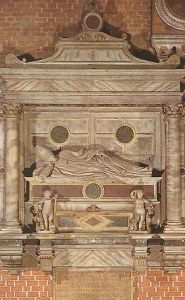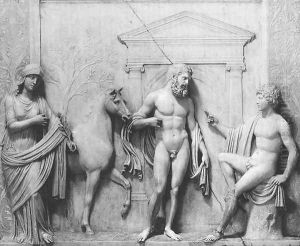Antonio Lombardo Paintings
Antonio Lombardo was an Italian sculptor who was born around 1458 in Venice, Italy. He was the second son of the renowned sculptor Pietro Lombardo, who played a significant role in the development of the Venetian Renaissance style in sculpture. Antonio was part of the Lombardo family workshop alongside his father and brother Tullio Lombardo, which was one of the most prolific and influential workshops in Venice at the time.
Antonio Lombardo's work is characterized by its blend of classical ideals with the emerging Renaissance aesthetics. He was deeply influenced by ancient Roman sculpture, which can be seen in his use of classical themes, poses, and drapery. Lombardo worked on a variety of projects, including architectural sculptures, funerary monuments, and smaller devotional pieces that showcased his skill in carving marble with exquisite detail and refinement.
One of Antonio Lombardo's most notable contributions to the world of art was his work on the Church of Santa Maria dei Miracoli in Venice, where he assisted his father. The church is renowned for its ornate marble facade and interior, which feature a range of sculptural decorations. His other significant works include the tomb of Doge Pietro Mocenigo in the Basilica di Santi Giovanni e Paolo, which he completed with his brother Tullio.
Throughout his career, Antonio Lombardo's talent was recognized and he received commissions from various patrons, including members of the Venetian nobility and the church. Despite the prominence of the Lombardo workshop, the documentation of Antonio Lombardo's individual contributions to certain projects is often scarce, with many works being a collective family effort.
Antonio Lombardo's death in 1516 marked the end of an era for the Lombardo workshop, but his legacy continued through the influence of his style on other Venetian sculptors and artists. His work remains an important part of the study of Venetian Renaissance art, offering insights into the integration of classical motifs with the evolving artistic tastes of the early 16th century.

